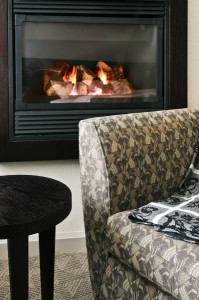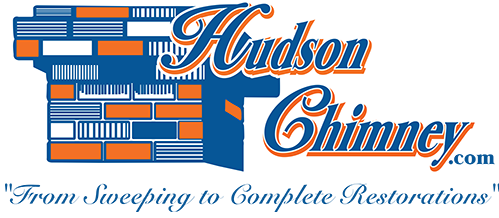by Mark Hudson | Dec 23, 2013 | chimney maintenance, fire safety, fireplaces
Say Goodbye to Your Chimney Blockages
Is your home’s safety one of your top priorities? Do you want to save yourself from spending thousands of unnecessary dollars on expensive repairs from damages you could have prevented? Well, we’ve got the answers that you’re looking for!
Since it’s the Holiday season, you are busy preparing your house for the coming festivities. This is also most likely the only time of the year when you get to check how your chimney is doing. Most of the problems of homeowners have something to do with chimney blockages. Here at Hudson Chimney the safety and well-being of our clients always come first, we want to give you a few trade secrets on identifying the culprits of these very common chimney blockages.

Has your fireplace started pouring smoke into your living room? You may have a blockage.
Creosote
You have probably heard this being mentioned in TV commercials and promotional ads. Creosote is basically the Diva and superstar amongst all the common chimney blockers. If you don’t know what it is, it’s a particular by-product of burning wood on your chimneys. It builds up on the sides of your flue system. If left unnoticed, Creosote may accumulate and this can definitely lead to flue (or house) fires. It is highly flammable.
Debris
Things such as trash, tree foliage, leaves and other debris both natural and otherwise are also one of the most common causes of blockage. You would be surprised what we find stuck on people’s chimneys during regular inspections. Most homeowners are barely aware of what gets stuck up their chimneys. But without a chimney cap, the wind can deposit lots of debris into your chimney.
Animals
Small birds, raccoons, squirrels and animals and bugs are also one of the famous chimney blockers out there. Not only do they cause problems due to that blockage, but most of these animals (those unable to get out) create a nasty and putrid smell that can enter and spread to your homes.
What we can advise everyone to do to save more money and prevent further damage from happening is to get your chimneys inspected and swept often. You can also opt to get a chase cover or a chimney cap. Hudson Chimney is well updated with the technology that would ensure your safety and would help you from spending too much. So don’t wait until your chimney gets clogged, give us a call now and we’ll gladly help you out!
by Mark Hudson | Sep 13, 2013 | fireplaces
Wood vs. Gas Fireplace
There is something comforting about gathering around a fireplace when the weather is cold. Those who already have them in their homes can count themselves lucky. But what if you are looking to add one to your home? Should you choose wood-burning or gas? This is a debate that has been going on for years, but the reality is that there are advantages and disadvantages to both.

There are advantages and disadvantages for both wood and gas fireplaces. A certified sweep can help you make the best decision for your lifestyle.
Most real estate agents agree that adding a fireplace of any kind will add value to a home but a wood burning fireplace will most likely add a little more than a gas fireplace. Most people enjoy the authentic nature of a wood burning fireplace and having heating and cooking independence from utility companies is a big plus. When the power goes out those with wood-burning fireplaces will have heat and cooked food. They also provide a convenient way to dispose of fallen branches or other wood debris that may have collected around a property. There is also something to be said about the atmosphere a wood-burning fireplace creates that is unmatched by any of its contemporaries. There are however some disadvantages. Wood-burning fireplaces can be messy and expensive to maintain. The burning of wood produces gases that will cool as they go up the chimney and turn into creosote which will stick to the sides of the chimney and can create a fire-hazard. This requires that the chimney be regularly cleaned. The cost of owning and operating a wood-burning fireplace is also higher than it is to operate a gas fireplace. Gas is cheap and burns cleaner than wood and takes a lot less time and maintenance to operate.
To those who may not want to deal with the mess and maintenance or a wood-burning fireplace gas logs may be the answer. Gas logs are dependent on the gas supply but they are cleaner burning options and offer a measure of safety. You don’t have to worry about a stray spark igniting your home and there is no need to stock up on firewood. The cleaning and maintenance of a chimney with gas logs is much less than that of a wood-burning fireplace but it still requires some attention especially if it was originally a wood-burning system. Water can do more damage to a chimney than fire and if unchecked can cause extensive damage.
Whether you choose wood-burning or gas logs a fireplace is a great addition to any home with the proper respect. They both produce fire and both must be protected from children and pets and require proper maintenance to maintain a safe functionality. If you do that you will be happy with whatever decision you make.
by Mark Hudson | Aug 26, 2013 | fireplaces
What is a prefab fireplace and why might I want one?
The term “prefab” gets a bad rap sometimes — people use it often enough to drop a sideways insult on boxy houses or assemble-at-home furniture. But prefab can be a thoroughly positive descriptor. When it comes to fireplaces, “prefab” is an indicator of a whole bunch of benefits, including quick and affordable installation, safe and efficient construction and broad flexibility, from placement to design.
Prefabricated or factory-built fireplaces are hugely popular nowadays — according to the Hearth, Patio & Barbecue Association, they make up a full three-quarters of all fireplaces installed each year. And these benefits are a big part of why:

A pre-fab fireplace is generally less expensive than a masonry fireplace.
Benefits Of Prefab Fireplaces
Installation Flexibility
Custom masonry fireplaces and chimneys are beautiful, but a whole lot of work and time goes into their construction. Technicians need to install a concrete footing to hold up the weight of all that masonry, and account for proper clearance between the chimney and nearby combustible materials. Those factors limit your installation options a bit. A prefab fireplace, however, is made out of much lighter materials (glass and metal, mostly), so it won’t need a footing. And many units are designed to be zero clearance fireplaces, which gives your technician much wider framing options.
Broad Mix Of Design
We’ve installed prefab units designed to mimic classic masonry units, and we’ve designed modern glass and stainless steel fireplaces that open on two sides, creating a view between two rooms and an eye-grabbing focal point in both. Odds are, there’s a prefab fireplace that matches your design preferences to the letter — and we’d be glad to help you find it.
Affordability
Between materials and labor, a brand new masonry fireplace and chimney can get pretty pricey. Prefab units, on the other hand, are made out of relatively inexpensive materials and are much quicker and easier to install, so they can be really affordable additions to your home.
Safety and Efficiency
Pre-fabricated fireplaces and chimneys are constructed together as a unit, designed to work together effectively, efficiently and safely. EPA-certified fireplaces, in particular, are made to meet exceptionally high levels of safety and efficiency, wasting little to no fuel and burning remarkably clean. Before pre-fabricated fireplace and chimney units hit the market, they have to pass strict tests to meet standards developed by the American Gas Association and Underwriters Laboratories. All that testing means you’re buying a unit that’s made to pollute less and produce more, with proof to back those claims up.
We love installing and maintaining prefab fireplaces for our customers — we’ve surprised more than a few homeowners who never thought they’d be able to enjoy their own fireplace by introducing them to these beautiful and affordable additions. Give us a call if you think a prefab fireplace is right for your home!
by Mark Hudson | Jul 30, 2013 | fire safety, fireplaces
Wood fires are beautiful and cozy, and great excuses for couples or families to enjoy a little togetherness. As we, as a culture, grow more focused on our ecological footprint, though, many of us have concerns about the effects of our wood-burning fireplace use.
We do have environmental and personal factors to consider when we use our fireplaces. Wood smoke contains poisonous carbon monoxide and other toxic air pollutants, including fine particulates, all of which can be breathed in. Studies have shown that these types of pollutants can have significant adverse health effects, contributing to ailments that range from asthma attacks to heart issues.
Your chimney system is designed to route those harmful byproducts out of your home, and away from your family. But being eco-conscientious means being intentional about the byproducts that are getting released from your home, too. And there are ways to enjoy your fireplace while minimizing its environmental impact.

Lessen Your Footprint – Jacksonville FL – Hudson Chimney
What can you do?
The Environmental Protection Agency’s Burn Wise program suggests a three-step approach to earth-friendly use of your wood-burning appliance — it’s direct, easy to remember and effective. That message: “If you choose to burn wood, burn the right wood, the right way, in the right appliance.”
Be intentional about choosing your fuel
In your fireplace or stove, make sure you only burn dry, seasoned cordwood. Your fireplace wood shouldn’t have a moisture content that’s higher than 20 percent. That drier fuel allows for the right kind of burn; wood with a higher moisture content burns colder, and that creates more creosote, more smoke, and more pollutants. And while it might be tempting to get rid of trash in your fireplace or stove, tossing old furniture, plastic or other items into your fire has negative consequences — it can release toxic chemicals into your home and the environment, and damage your chimney. So remember: seasoned cordwood, and only seasoned cordwood.
Aim for hot and bright fires
An ideal fire — one with the lowest emission levels — burns hot and bright. Make sure your flue damper is completely open when you start a fire; letting a fire smolder leads to more smoke, and more smoke means more pollution.
Well-maintained chimney systems go a long way toward efficient burning — have your chimney and appliance inspected annually, and cleaned regularly too. You’re more likely to have a proper hot-burning fire with a clean, well-venting chimney and an appliance that’s in proper working order.
There are tricks to hotter, more efficient fires, too, and the old, bottom-up building method we were taught as kids isn’t the only or best way to build a fire. Lots of folks swear by the top-down method, which, when done correctly, creates less smoke and more predictable fires.
The basic approach: lay larger pieces of split, seasoned cord wood on the bottom in one direction; top that with a perpendicular layer of slightly smaller pieces, then another, slightly smaller perpendicular layer. Top that third layer with kindling, then place some newspaper (sheets rolled up and then tied in a knot work well) at the very top, and light it. You should see the flames quickly travel downward for a strong, consistent fire with less smoke and lower levels of pollutants. It’s a small change, but compounded over many, many fires (figures show that there are nearly 30 million fireplaces nationwide), it makes a difference.
Replace old appliances with newer, more efficient ones
Historic fireplaces and stoves can be beautiful, but they tend to score low on the energy-efficiency scale. Eco-friendly fireplace usage can mean replacing that old fireplace or stove with a new appliance that’s designed to make smarter use of fuel and deliver far lower emission levels.
An EPA study of fine particle emissions showed that the average levels coming from a traditional fireplace were 20 times higher than an EPA-certified woodstove, and nearly 60 times higher than that of a pellet stove. Replacing an old appliance with a newer, EPA-certified unit can dramatically decrease the level of pollutants you’re putting out — EPA-qualified heating appliances burn around 70 percent cleaner than traditional, older fireplaces.
You can feel confident that you’re using the industry’s most efficient appliances by supporting companies that take part in the EPA’s Wood-Burning Fireplace Program. The program is a partnership between the EPA, the U.S. Office of Air Quality Planning and Standards and appliance manufacturers. Those manufacturers commit to designing and producing cleaner-burning fireplaces that put out lower levels of particulate emission — which means they’re polluting less. You’ll see a tag on appliances that meet the EPA’s clean-burning standards, or you can take a look at a list of qualified fireplaces and retrofit devices on the EPA’s website: http://www.epa.gov/burnwise/fireplacelist.html.
Some state and local agencies have replacement programs that offer refunds to homeowners who replace an old fireplace or stove with new, EPA- fireplaces, stoves or inserts. Look up your area on the EPA’s website, too, to see if there might be a helpful program in your area.
You can love your fireplace and love the planet — it just takes the intention, a little knowledge, and, maybe, the help of a knowledgeable fireplace and chimney company.
by Mark Hudson | Jul 15, 2013 | chimney maintenance, fire safety, fireplaces
There are few things more pleasurable than coming in from the cold and building a roaring fire. In order to fully enjoy your fireplace, it is important to keep in mind the maintenance that keeps you safe and warm. Hiring a certified chimney sweep to inspect your heating system once a year is critical. This will remove the worries from your mind. After all, you have enough worries!

Crackling Fire – Jacksonville FL – Hudson Chimney
Why shell out hard-earned money to hire a sweep? There are many reasons; but they mainly are the same reasons you’d take a car that wasn’t running properly to a mechanic. By the time there is a problem with your car, it is sometimes more costly and can endanger your safety. Sweeps, like mechanics can see things you don’t notice. And a set of professional eyes on your chimney may see smaller problems before they become costly repairs. Some of the things your sweep will be looking for are:
- “Puffy” or “honey combed” creosote
- Distorted metal of the damper, metal smoke chamber connector pipe or factory-built metal chimney
- Cracked or malformed flue tiles.
- Discolored and/or damaged rain cap
- Heat-damaged TV antenna attached to the chimney
- Creosote flecks and pieces on the roof or ground
- Roofing material broken from hot creosote
- Fissures in exterior masonry
- Evidence of smoke escaping through mortar joints of masonry.
Here are 5 tips for how to best keep your system safe and efficient:
- Have a certified chimney sweep or city-paid building inspector look at your whole system.
- Have your chimney professionally cleaned and inspected.
- Do everything you can to prevent water from entering the system. Water can cause damage to the structural integrity of your chimney and increase the odds of a chimney fire.
- Keep your eyes and ears open and if you smell an odor, this could indicate a blockage in your chimney or excess creosote.
- Learn as much as you can about creosote. The Chimney Safety Institute of America also provides a great deal of useful information for homeowners.





